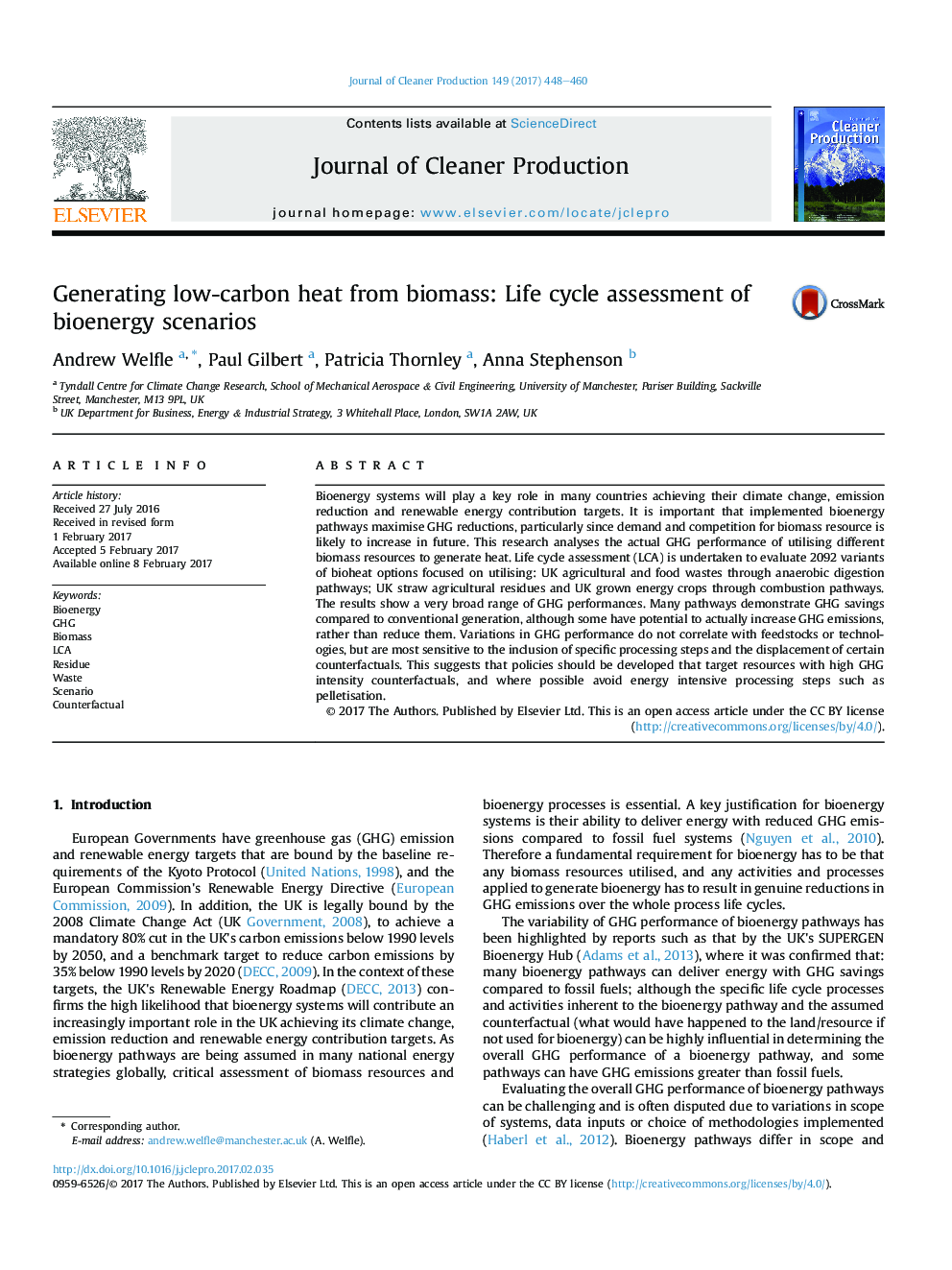| Article ID | Journal | Published Year | Pages | File Type |
|---|---|---|---|---|
| 5480746 | Journal of Cleaner Production | 2017 | 13 Pages |
Abstract
Bioenergy systems will play a key role in many countries achieving their climate change, emission reduction and renewable energy contribution targets. It is important that implemented bioenergy pathways maximise GHG reductions, particularly since demand and competition for biomass resource is likely to increase in future. This research analyses the actual GHG performance of utilising different biomass resources to generate heat. Life cycle assessment (LCA) is undertaken to evaluate 2092 variants of bioheat options focused on utilising: UK agricultural and food wastes through anaerobic digestion pathways; UK straw agricultural residues and UK grown energy crops through combustion pathways. The results show a very broad range of GHG performances. Many pathways demonstrate GHG savings compared to conventional generation, although some have potential to actually increase GHG emissions, rather than reduce them. Variations in GHG performance do not correlate with feedstocks or technologies, but are most sensitive to the inclusion of specific processing steps and the displacement of certain counterfactuals. This suggests that policies should be developed that target resources with high GHG intensity counterfactuals, and where possible avoid energy intensive processing steps such as pelletisation.
Related Topics
Physical Sciences and Engineering
Energy
Renewable Energy, Sustainability and the Environment
Authors
Andrew Welfle, Paul Gilbert, Patricia Thornley, Anna Stephenson,
